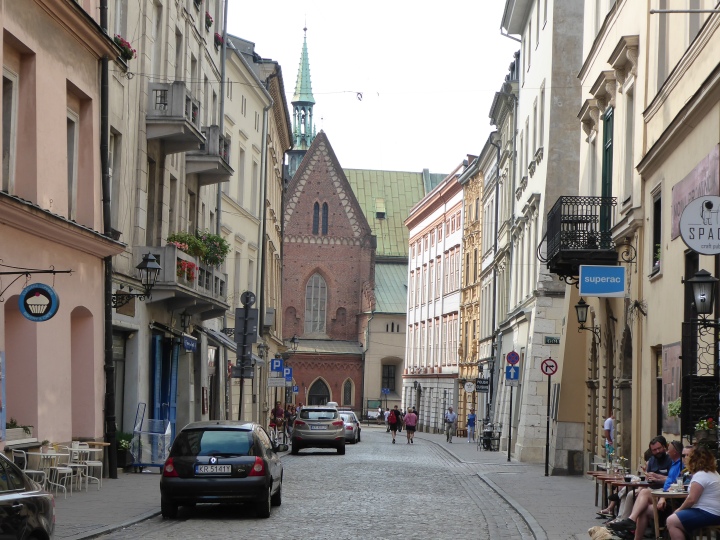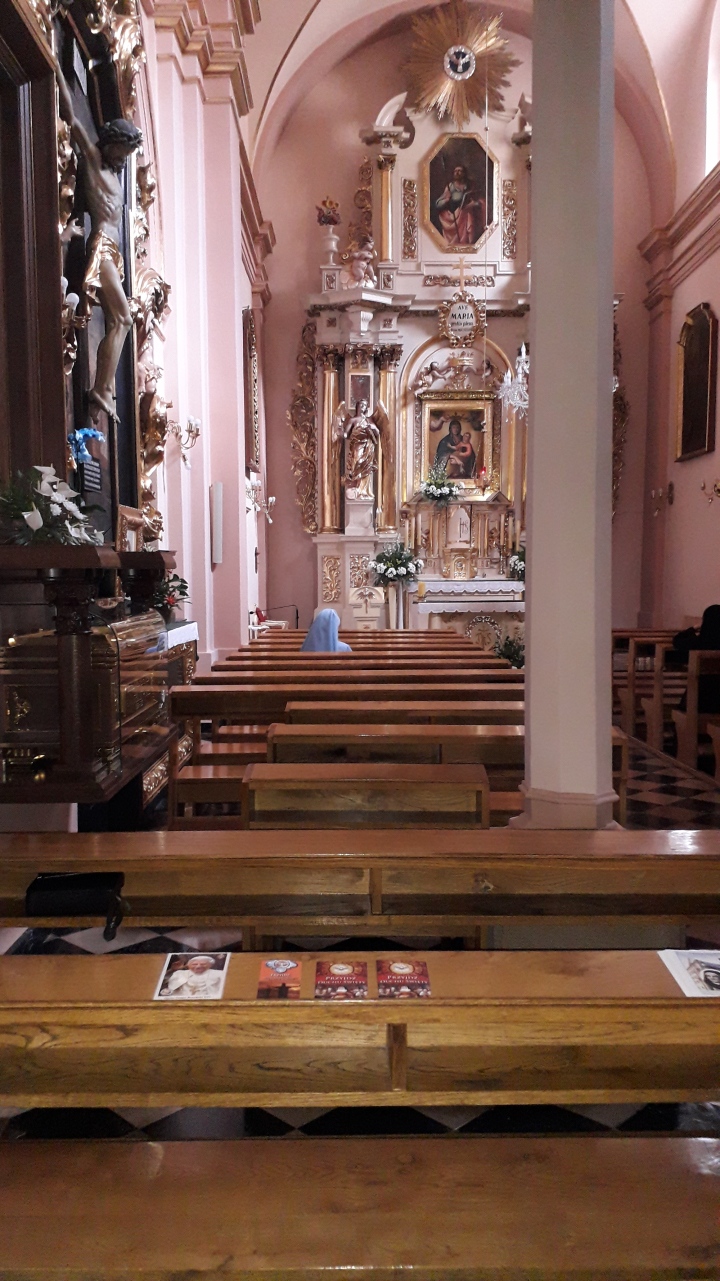On arriving in Kraków early in August 1879 the second place Alexander Gordon visited, after Ulica Bracka, was the Dominican Church of the Holy Trinity:

Then I went to the Trójcy Kósciól where Gregory Pauli, on Trinity Sunday, 1562, preached that famous sermon during which the golden ball fell from the top of the spire, and the Unitarians said it was a good – and the Catholics a bad – omen.
Gregory Pauli (1526-1591) was one of the leaders of the Reformed church in Poland who had been appointed pastor of the congregation of Kraków in 1558. Educated at Kraków, Königsberg and Wittenberg he was regarded as a very able preacher. By this time the former Dominican church was in the hands of the Protestants and through the patronage of Stanlislas Cikowski , arch-chamberlain of Kraków and a general in the army, Pauli was appointed minister of Holy Trinity Church. As well as being an open advocate of Unitarianism he was also a pacifist and espoused millennialism, adult baptism and communism. He was involved in the subsequent division of Polish Protestantism into the Minor and Major Reformed churches.
According to Robert Wallace, in the second volume of his Antitrinitarian Biography (1850), “the citizens crowded to hear his sermons”. Wallace also recounts this incident on Trinity Sunday: “Some said, that the blow was meant to strike terror to the heart of the Preacher; but others said, that it was intended to impart new courage to him. The wiser and more reflecting portion of the community were silent.” Older images of the church seem to show a tower at the front of the building which is presumably where this golden ball was positioned.

Chancel ceiling
The church, dating from 1222 and currently undergoing extensive renovation, is every bit as impressive today as when Gordon saw it. In 1879 he wrote:
A fire, in 1850, did very serious damage to this church, but it has been handsomely restored, with a good deal of the old work entire. From a noble marble gallery, adjoining the choir, I could view the whole interior and the spectacle was striking in every way. Certainly the Jesuits did their work well. A more devoutly Catholic assemblage I never saw. People in all sorts of picturesque costumes were kneeling prostrate like Turks, and kissing the floor. The white-robed Dominicans sang lustily in their stalls, and the organ was a splendid one. The vergers in this church were women, all in pure white linen, with no caps, but elaborately-braided hair.
I don’t think there are women vergers any more but I saw plenty of white-robed monks and large, devout congregations. I sought out some of the other things Gordon had found but was not entirely successful, because of the restoration it is not possible to see everything.

Part of the extensive cloisters

Another view of the cloisters

A side chapel

Staircase to the ‘noble marble gallery’ currently undergoing restoration
Gordon was impressed by what he saw in Kraków:
The richness of the churches here, of the cathedral especially, in splendid monuments, is beyond description. It was not without a thrill of emotion that I stood before the red marble figure of Archbishop Peter Gamrat, who burnt Katherine Weygel in the market-place. This prelate’s likeness has a huge underhung jowl, but a massive, intellectual forehead, exactly correspondent with the career of power and sensuality which he ran.
Peter Gamrat (whose memorial is actually in Wawel cathedral) was simultaneously Bishop of Kraków (1538-1545) and Archbishop of Gniezno, Primate of Poland (1441-1545), and was responsible for the brutal treatment of Katherine Weygel (c.1460-1539).
Katherine Weygel/Katarzyna Weiglowa (or Catherine Vogel as he calls her) is one of very few women listed in Wallace’s Antitrinitarian Biography. She was married to Melchior, a Jewish goldsmith and alderman of Krakow. She seems to have imbibed something of his religious views and after his death was charged with apostasy telling her inquisitors “I believe in the existence of one God, who has created all the visible and invisible world, and who cannot be conceived by the human intellect.” For this she was imprisoned for ten years before being burned at the stake at the age of about 80 in the market place. This took place at a time in Polish history when such brutal oppression was rare but Katherine Weygel certainly suffered at the hands of the religious authorities.

The market square in which Katherine Weygel was burned at the stake
In his letter to the Christian Life of 1879 Gordon also recorded that to his surprise his guide book noted there were 14 Unitarians listed in Kraków. The local Protestant pastor, who was very helpful to him, could not account for this in any way. But in a later publication Gordon suggested that this was probably a reference to “Uniat Greeks, that is members of that section of the Greek Church which is un union with Rome”. So there wasn’t a little hidden group of Unitarians that had laid undiscovered for centuries, but there was plenty of Unitarian history, hidden in plain sight.








































